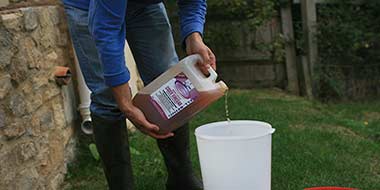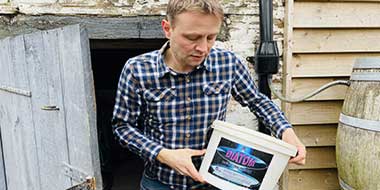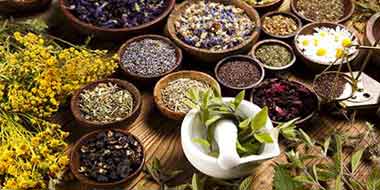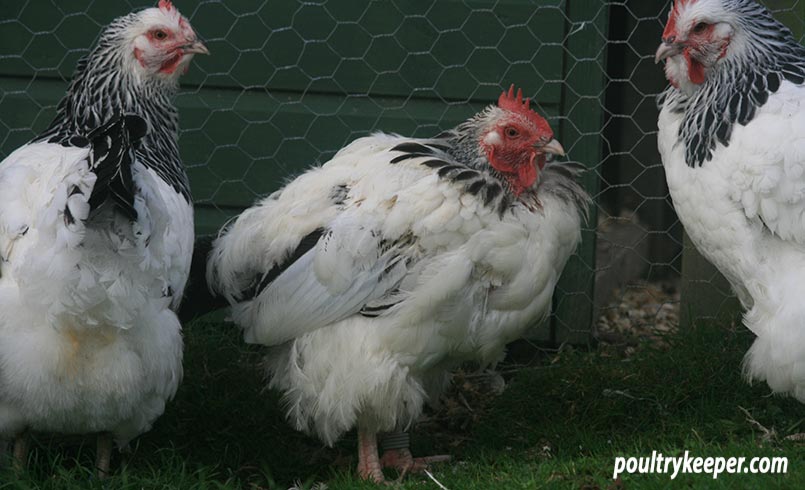
One of the most shocking things to see as a new poultry keeper is chickens moulting. A moult is when chickens lose their feathers and replace them with new ones. It usually takes two to three months to complete although sometimes they can drop a lot of feathers in a short space of time which can cause alarm if you’re not expecting it!
As the day length starts to shorten and summer starts to close, our chickens will renew their feathers during their annual moult. Chickens moulting is not unusual, all birds will moult, but it can be a stressful time for them, so it’s useful to have a little understanding of their needs at this difficult time.
Moulting chickens symptoms
If a hen is going to moult, her plumage will first, take on a very dull appearance although, the most prominent symptom of chickens moulting is feather loss.
They will slowly lose their old feathers, and new feathers will grow in the place of old.
It can be shocking because some birds will look very shabby, and some may even almost ‘oven-ready’, which can be quite alarming if you aren’t expecting it.
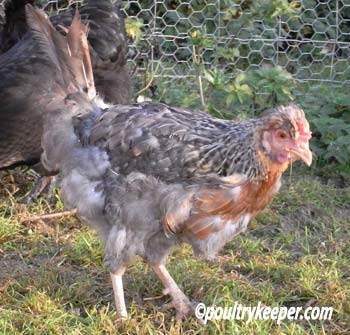
Another symptom of chickens moulting is new feather growth. A new feather dislodges and pushes out the old one as it grows in the same position to replace it, underneath the skin.
The follicles produce blood-filled ‘pin feathers’ which are new developing feathers.
You can often see these new pin-feathers appearing, and they look very dark, almost black (because of the colour of the blood inside the feather).
Moulting chickens need to be handled with care at this stage because holding them will cause some discomfort or even pain.
Fully formed feathers are not living and do not have nerves, so no pain is felt if they are damaged, (just like when we cut out nails or hair), however, chickens have nerves at the base of feathers and can feel them being moved.
Chickens feel pain when feathers are dislodged, just like we feel pain when pulling hair.
New feathers are dislodging old feathers during the moult, so the area becomes especially sensitive for them.
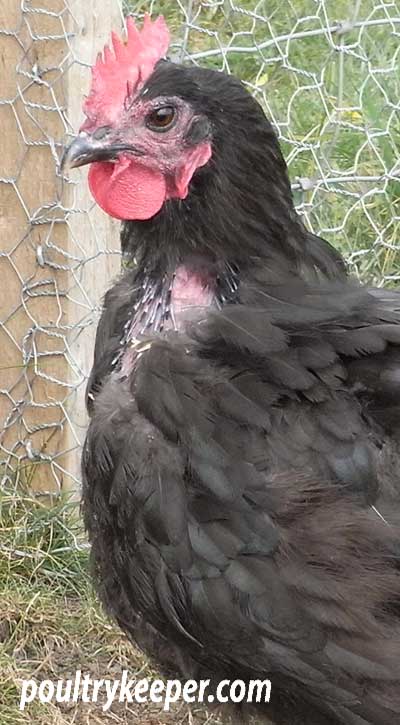
Quick questions
They both have the same meaning, except chickens moulting is British English, and chickens molting is American English. As with other words on this website where there are two spellings, I have used British English.
Chicks and growing birds will lose feathers as they grow up, but we usually mean adult chickens when we talk about chickens moulting.
Once pullets and cockerels have their full adult plumage at around 18-20 weeks, they will keep these during their first year and moult the following autumn after their first season of egg-laying. Depending on when they hatched, this will make them 12-18 months old by the time they go through their first propper moult. They will moult every year after this.
The natural progression is for chickens to start laying eggs in the spring, then, as they come to the end of their laying cycle, gradually lose their feathers. Feather loss takes place in a sequence, so they are not entirely bare. This moulting sequence usually takes three to four months from beginning to end.
Some hens are poor layers and are slow to moult. They will lay for a few months, then stop in the summer and lose feathers slowly over the next four to five months.
You can rehome or cull slow moulting chickens, breeding from the fast moulters to improve your flock’s average moulting speed, as well as improving the number of eggs they lay.
You may read on some websites about speeding up chickens moulting by reducing their food and water and daylight hours artificially. I have to disagree with this advice. The moult requires additional dietary protein and amino acids to build new feathers. If a chicken suffers from a food shortage, or stress whilst moulting, fret marks (visible lines) can appear across feathers. These are weak points and are more likely to break at this point.
Chickens need additional feed and careful handling during the moult. Don’t believe it speed up the moult; it just causes them unnecessary stress and feather damage.
When do chickens moult?
Most birds will moult after the breeding season when egg-laying stops; which for chickens is late summer or early autumn. Chickens moult at this time because they need less energy for other things such as laying eggs, raising young and keeping warm and (in the wild) their food would have been plentiful at this time of year.
By this time of year, some of their feathers are likely to be damaged or worn. They will renew their plumage in preparation for the colder weather ahead.
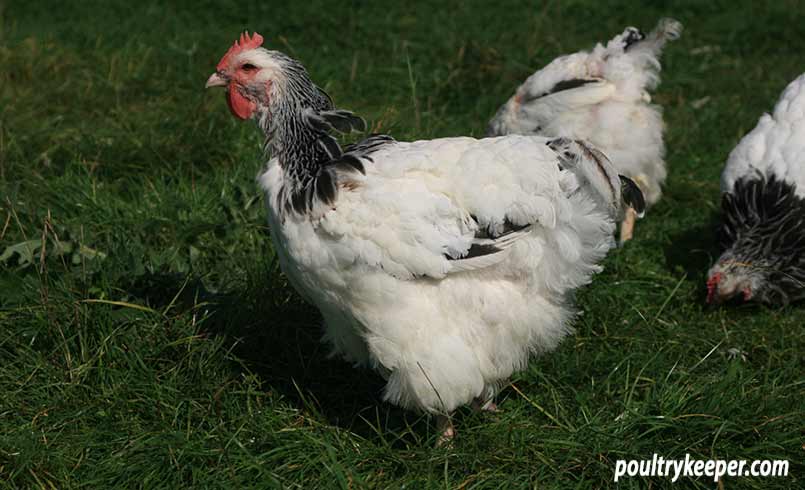
Chickens moulting at other times of the year is usually because of stress. It could be an illness or other upset, such as a close shave with a predator, shortage of food or water. Even introducing a new chicken causes stress for the whole flock because they all need to re-establish the pecking order.
We call this a partial moult, although it is usually only to replace the neck feathers and hens usually continuing to lay at a reduced rate.
The shortening length of daylight hours triggers the end of egg-laying and the moult in chickens, so it is vital to provide them with a routine and not upset their natural day and night pattern.
Chickens moulting fully much earlier in the summer often means that they haven’t been on a ‘normal’ daylight pattern.
For example, battery or free-range laying hens receive fifteen hours or more of artificial daylight for 15-18 months, so they keep laying eggs. Of course, if you rehome them, they will need a break from laying, some new feathers and time to adjust to natural daylight hours.
Chicks and growers moulting
Young birds will shed their feathers twice during the first six months of their life. However, this is a much more gradual process, and it’s not so noticeable, youngsters still carry plenty of feathers.
Usually, there are only a few feathers lying around the run, giving this away. It is nothing for us to worry about, and just another step for them turning into adult chickens. By the time they are 18-20 weeks old, they will have their adult plumage.
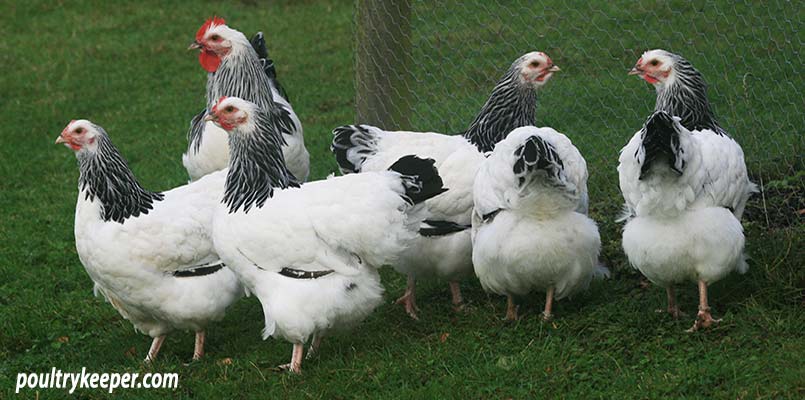
The moulting sequence
There is a sequence to chickens moulting. First, the head and neck will lose feathers, followed by the back and breast, then the bottom and thighs. Last to drop are the wing and tail feathers.
There is an overlap and the faster a bird moults, the more overlap you will see but I think it’s useful to know that the loss of head and neck feathers are the first signs of the moult.
Moulting chickens: diet
Protein requirements
Feathers are composed mainly (about 85%) of a fibrous structural protein called keratin, a dead substance formed by living cells. Once feathers are fully developed, they do not receive nourishment and are not living structures, but whilst they are growing, our chickens need to provide substantial amounts of protein to build the keratin tissue.
When chickens moult to replace their feathers, laying hens will almost always stop producing eggs. Eggs are also mainly protein, so they can divert protein required for egg-laying to make feathers if they stop laying.
Pure breeds usually take longer to moult than hybrid hens. Occasionally hens will lay the odd egg during the moult, but most will take a break.
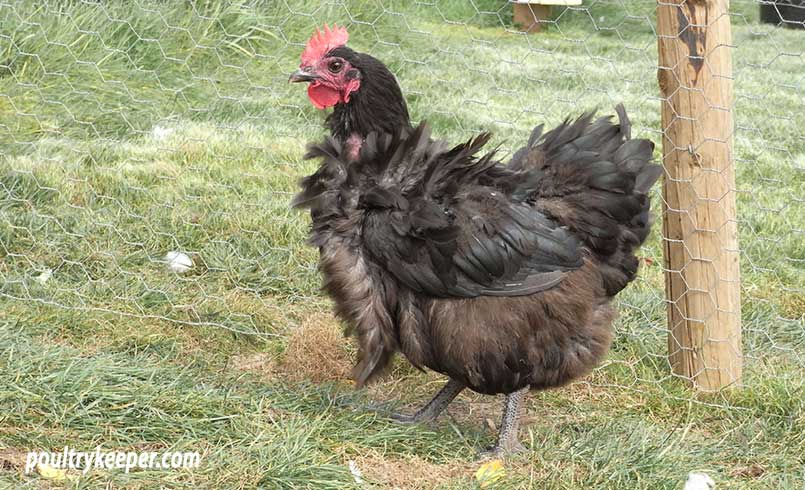
Supplements during the moult
Amino acids, vitamins and minerals
Amino acids, vitamins and minerals are the basic building blocks our hens need to create protein, so using a vitamin supplement or apple cider vinegar may be useful during the moult.
I believe a tonic of apple cider vinegar is helpful to chickens at times of stress. It contains useful vitamins and minerals. You can easily add it to their water to help them through this challenging time, and it’s not expensive. Read more about apple cider vinegar for chickens here and how to give it to them.
Mixed corn/Scratch
Mixed corn (called scratch in the US) is lower in protein than a complete feed for chickens (such as layers pellets). Feeding this and other treats will dilute their dietary protein when ideally they need additional protein.
I do not feed mixed corn or wheat to my chickens during the moult. They get their complete feed, provided ad-lib in a feeder.
Cat kibble
Some poultry keepers supplement their chicken’s diets with additional protein. ‘Old timers’ and older books recommend a handful of crushed, dried cat food per chicken fed a couple of times per week.
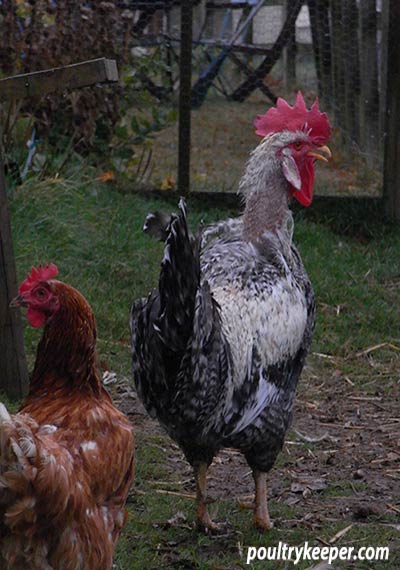
Cat food protein comes from animals and is rich in amino acids. Dog food also contains protein, but this comes from grains, so it is not suitable for chickens moulting.
Technically, DEFRA says, you cannot feed chickens with protein from other animals in the UK, so I can’t endorse this. I provide a good quality complete layers-feed like this one and allow them to free-range to supplement their diet with insects and other goodies. I also leave feathers they have shed in their run instead of clearing them up, and they will eat some of these to increase their protein levels.
Hard-boiled eggs
Of course, eggs are high in protein and an excellent food to give to chickens moulting. Mashed hard-boiled eggs are my favourite to give to my flock as a protein boost. This isn’t always easy considering most of hens have slowed or stopped laying, so you may need to resort to buying in some eggs.
Sprouted grains
Supermarkets are starting to sell sprouted seeds, however, sprouting grains are very easy to produce at home. All you need is a double layer of kitchen roll on a tray, soaked with water and a warm place.
I also sprout seeds for us to eat, so I find it easier to produce more using a sprouting jar like this one. It has a perforated lid so excess water can drain out and the seeds are kept moist without them sitting in water.
Place it in a sunny window. All you need to do is rinse the seeds twice per day. This keeps them moist and within a few days, you will have sprouted seeds.
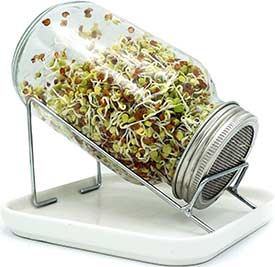
Sprouting seeds or grains improves the amount of protein as well as the quality of the protein. Sprouted wheat is my favourite for my birds (and I always have lots of it available) but alfalfa seed is particularly good for them.
Feather pecking
In extreme cases, if chickens are not getting enough protein, they will peck at other birds feathers and eat them to increase their protein levels. Birds are very vulnerable since it doesn’t take much for a wound to appear, and chickens are attracted to red, so they love to peck at red blood exasperating the problem.
You should always separate a bird if blood is visible.
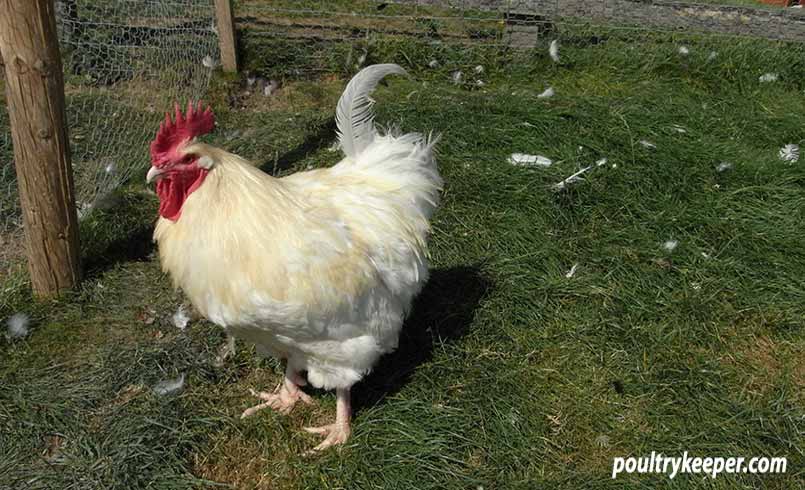
Wing clipping
If you have clipped a wing to stop your chickens from flying, you will need to do this again once their feathers have re-grown.
Be careful not to clip the feathers too early since blood is inside a feather’s quill when growing. If you cut it too soon, it will bleed profusely and be very difficult to stop.
Feathers whose quills are full of blood will appear very dark, almost black instead of clear/white.
How to clip a chickens wing provides further information on how to do this.
Related Articles:
You might also find these articles useful about natural remedies for supporting chickens health:
- Garlic for Chickens - feeding garlic to chickens may be good for their health.
- Apple Cider Vinegar for Chickens - a useful tonic for the health of your flock.
- Feeding Chickens - correct feeding at all times is important to have healthy chickens and lots of eggs!
Summary
- Chickens moult whilst growing, then annually after their first year of egg-laying.
- The full or ‘annual’ moult takes place at the end of the summer or early autumn.
- A complete moult will usually take three to four months.
- To grow healthy new feathers, chickens need protein. Feed with a complete layers-feed and be careful not to dilute protein with mixed corn or other treats.
- Chickens will usually reach the end of a laying cycle and stop producing eggs during this time.
- They divert dietary protein from egg-laying to feather production.
- When new feathers are growing through (called ‘pin’ feathers), careful handling is necessary to prevent discomfort and pain, so take care if you need to catch or hold your chickens.

